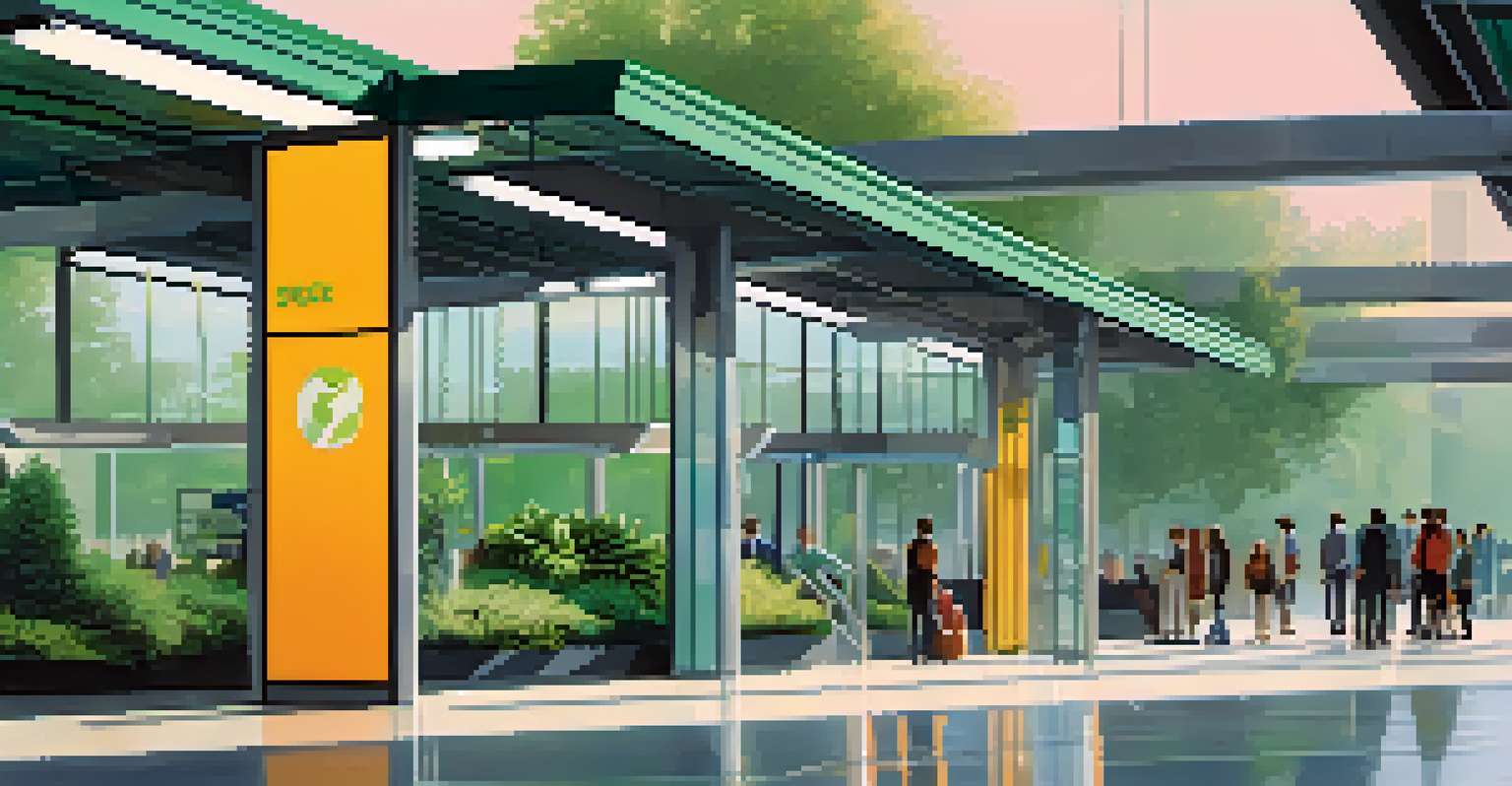The Role of Government in Promoting Alternative Transport

Understanding Alternative Transport: A Quick Overview
Alternative transport refers to modes of transportation that are more sustainable than traditional vehicles. This includes options like cycling, walking, public transit, and electric vehicles. With the growing concern over climate change, these alternatives are gaining traction as viable solutions for reducing carbon emissions.
The future of transport is not about cars, but about creating a seamless experience between multiple modes of transport.
Governments play a crucial role in promoting these options by creating policies that encourage their use. For example, they might invest in infrastructure such as bike lanes or electric vehicle charging stations. This not only benefits the environment but also enhances public health and community connectivity.
By understanding the various forms of alternative transport, citizens can make informed choices about their travel. This awareness can lead to increased participation in sustainable practices, ultimately helping to reduce traffic congestion and pollution in urban areas.
The Economic Benefits of Alternative Transport
Investing in alternative transport can have significant economic advantages for governments and local economies. For instance, improved public transport systems can lead to increased job accessibility, allowing more people to reach employment opportunities. This, in turn, can stimulate local businesses as more customers can easily access shops and services.

Moreover, alternative transport options often require less maintenance and infrastructure investment compared to traditional roads. By focusing on these sustainable methods, governments can free up funds for other essential services, like education and healthcare. This creates a win-win situation for both the economy and the community.
Economic Gains from Alternative Transport
Investing in sustainable transport options boosts local economies by improving job accessibility and attracting eco-conscious businesses.
Additionally, the promotion of green transport can attract eco-conscious businesses and tourists. Cities known for their commitment to sustainability can enhance their appeal, drawing in investments and boosting local economies through increased tourism.
Government Policies that Support Sustainable Transport
Governments can implement a variety of policies to support alternative transport initiatives. Examples include subsidies for public transit, tax breaks for electric vehicle purchases, or funding for bike-sharing programs. These incentives can motivate citizens to choose more sustainable options over conventional vehicles.
Sustainable transport is not just a necessity for our environment; it's a vital investment in our economy and our communities.
Additionally, zoning laws can be adjusted to promote mixed-use developments that reduce the need for long commutes and encourage walking or cycling. By designing cities that are more pedestrian-friendly, governments can create environments that naturally promote alternative transport use.
Such policies not only help reduce traffic congestion but also enhance the quality of life for residents. Accessible public transportation and bike-friendly streets can lead to healthier lifestyles and a stronger sense of community among citizens.
Infrastructure Development for Alternative Transport
Infrastructure is a cornerstone of successful alternative transport systems. Governments must invest in building and maintaining facilities such as dedicated bike lanes, pedestrian walkways, and efficient public transit stations. This infrastructure not only supports the use of alternative transport but also ensures the safety of those who choose it.
For example, cities that have developed extensive bike networks have seen a significant increase in cycling rates. When people feel safe and supported in their choice of transport, they are more likely to adopt it as part of their daily routine. This can lead to reduced traffic congestion and lower emissions.
Government Policies Drive Change
Effective government policies, such as subsidies and zoning laws, can significantly promote the adoption of alternative transport.
Furthermore, integrating various transport modes, such as linking bike paths with public transit, can create a seamless experience for users. When people can easily transition from one mode to another, they are more likely to choose sustainable options for their journeys.
Public Awareness Campaigns and Education
Raising public awareness about the benefits of alternative transport is vital for its widespread adoption. Government-led campaigns can inform citizens about the environmental, health, and economic advantages of choosing sustainable transport options. This could involve workshops, social media campaigns, or community events that highlight success stories.
Education is another key component in promoting alternative transport. Schools and local organizations can collaborate with governments to educate students and families about the importance of sustainability in transportation. By instilling these values at a young age, communities can foster a culture of eco-friendly travel.
Moreover, engaging the public in discussions about transport planning can empower citizens. When people feel their voices are heard, they are more likely to support initiatives that promote alternative transport and become advocates for change in their communities.
Collaboration Between Government and Community
Collaboration between government bodies and local communities is essential for effective alternative transport initiatives. When governments engage with community members, they can better understand their needs and preferences. This feedback can inform policies and infrastructure projects that truly serve the population.
For instance, community workshops can be held to gather input on proposed bike paths or public transit routes. This not only ensures that projects align with residents' needs but also fosters a sense of ownership and pride in the initiatives. When locals see that their input is valued, they are more likely to participate actively.
Infrastructure is Key for Success
Robust infrastructure, including bike lanes and public transit stations, is essential for ensuring the safety and convenience of alternative transport users.
Additionally, partnerships with local businesses can enhance alternative transport efforts. Collaborating with companies to incentivize employees to use public transit or bike to work can lead to a more sustainable community while boosting local economies.
Challenges in Promoting Alternative Transport
Despite the numerous benefits, promoting alternative transport does come with its challenges. One major hurdle is the existing infrastructure, which may be heavily geared towards cars. Retrofitting cities to accommodate alternative modes of transport can be costly and time-consuming, often facing pushback from residents accustomed to traditional vehicles.
Additionally, cultural attitudes toward transportation can be difficult to change. In many regions, driving is seen as the norm, and alternatives may be viewed as less convenient or desirable. Overcoming these mindsets requires persistent educational efforts and showcasing the advantages of alternative transport.

Finally, funding can be a significant barrier to implementing sustainable transport projects. Governments must prioritize these initiatives in their budgets, often competing with other pressing needs. However, by demonstrating the long-term economic and health benefits, policymakers can gain support for these crucial changes.